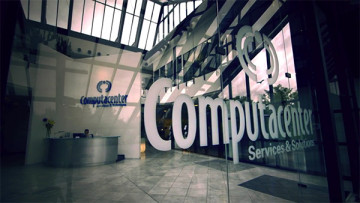 Computacenter has announced promising results for the financial year 2023.
Computacenter has announced promising results for the financial year 2023.
The company said its gross invoiced income (GII) exceeded £10 billion, marking an increase of 11.4 per cent compared to the previous year. Additionally, there was a 10.2 per cent rise in gross profit and adjusted earnings per share (EPS).
These gains were attributed to advancements in technology sourcing and services.
The gross profit saw a 10.2 per cent uplift, while the profit before tax rose by 5.4 per cent, indicative of heightened strategic investments.
The Value-Added Reseller (VAR) noted increased cash generation over the year, primarily due to stock levels stabilising after the supply chain crisis.
Computacenter CEO Mike Norris said: “We have achieved our nineteenth consecutive year of growth in adjusted earnings per share, surpassing our market performance in 2023, as our major clients continued to make substantial investments in new technology.”
“We navigated through an uncertain macroeconomic environment and inflationary pressures effectively, significantly reducing our inventory, which resulted in a record net cash position.
“As intended, we increased our investment in strategic initiatives to bolster our competitive edge and foster future growth.
“We anticipate 2024 to be another year of advancement, with growth expected to be more pronounced in the latter half. We persist in investing for future expansion.
“Looking ahead, the robustness of our integrated technology sourcing and services model, coupled with our geographical diversity, instils in us a sustained confidence in our long-term growth potential,” Norris said.
The progress in technology sourcing and services propelled the results for 2023. Technology sourcing GII witnessed a 13.1 per cent year-on-year surge in constant currency, driven by large enterprises and Computacenter’s expanding market share.
Post-pandemic, the demand for workspace technology has remained muted; however, the reseller anticipates an upturn in 2024, with AI forecasted to catalyse technology upgrades.
Conversely, service revenue experienced a modest growth of 3.1 per cent, yet the gross margin performance saw improvement throughout the year.
“A highlight of 2023 has been the continued expansion of our business with some existing key clients, alongside the acquisition of some strategically important new clients, with whom we foresee growth in the forthcoming years,” Norris commented, referring to contracts secured towards the year’s end, which are expected to contribute to the company’s profitability from 2024 onwards,” Norris said.
In 2023, the group’s managed services revenue grew by 2.5 per cent and 1.3 per cent in constant currency. This was facilitated by the cost of living adjustment clauses in managed services contracts, which enabled the group to elevate rate card prices and offset cost increases, thereby driving improved margin performance.
With the supply chain crisis now in hindsight, stock levels have normalised. Like some of its competitors, Computacenter has cited a return to pre-pandemic customer ordering patterns and a reduction in backlogs as factors contributing to its enhanced cash position.
“Industry supply chains and customer ordering behaviours have reverted to pre-Covid normalised levels, with customers no longer needing to place orders with extended lead times due to the improved availability of products. As a result, backlogs across most of our regions have diminished, leading us to effectively manage down our inventory position, which has significantly bolstered our cash generation,” Norris said.
International markets continue to provide stability, with Germany being highlighted as a key performer in the company’s Q3 results, again offering a steadying effect.
Computacenter identified this market as a primary contributor to its 3.1 per cent service revenue growth, as well as a 5.7 per cent increase (in constant currency) in professional services, despite a downturn in the UK.
While North America experienced a positive uptick in services during Q3, the overall service revenue in the region saw a slight decline year-on-year, by 2.2 per cent.
Nevertheless, the North American markets collectively contributed to a 9.2 per cent revenue growth, amounting to £2.7 billion, predominantly driven by technology sourcing.





